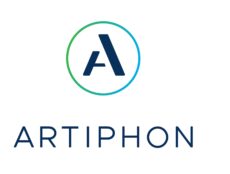
We often wonder how to keep up with rapidly changing technology. But there’s an even bigger challenge: How do we keep up with the ground-breaking insights that technology is providing — insights that are causing entire disciplines to step back and re-evaluate some of their fundamental approaches?
You Can’t Always “Just Look It Up”
My colleagues, neuroscientist Terrence Sejnowski, educator Beth Rogowsky, and I have watched as neuroscience has exploded with vitally important new findings over the past two decades. In fact, Terry, as the Director of the Computational Neurobiology Laboratory at the Salk Institute, has played a role in some of those breakthroughs.
At long last, neuroscientists are beginning to understand some of the fundamental processes underlying the neural structures of learning. Perhaps surprisingly, these insights are turning some educational adages topsy-turvy. One such idea is that “you can always look it up,” so there’s no need to learn anything by heart. As it turns out, if you don’t have key information internalized, there’s no way you can ever become an expert in the subject. Could you speak French if you always went to Google translate to “just look it up?” Other myths, such as the idea of “drill is kill,” are also being debunked. Well-constructed drills, as it turns out, actually lead to deep levels of skill and can ultimately make learning more enjoyable. Drill, in fact, can lead to skill!
Calling all teachers! Are you looking for new ways to engage your students? In the new course, Uncommon Sense Teaching, you will learn the science of how we learn and explore ways to help your students learn effectively, and feel motivated. https://t.co/IIvQklwQfM
— Coursera (@coursera) July 16, 2021
Neuroscientific breakthroughs have profound practical applications in the classroom. Differences in students’ working memories, for example, can mean that approaches that work well for some quicker-to-learn students (“race car” learners) may actually backfire and turn off “hiker” students who learn more slowly. What’s important here is that hiker students can learn just as well, or even better than race cars, if their learning is carefully scaffolded by the teacher. What is the practical upshot of these findings? Some approaches currently encouraged in education involve letting students direct their own learning. This can be the equivalent of handing the keys to the car to a student — before the student has learned to drive.
These types of findings have extraordinary practical applications for teachers in their everyday work. Educational institutions, like any institution, have their own inertial processes. How can these new ideas and approaches be spread in practically useful ways? In fact, how is it even possible to communicate these interdisciplinary ideas broadly?
Enter a Massive Open Online Course
Enter Coursera, a massive open online course (MOOC) platform. Seven years ago, Terry and I created a course, Learning How to Learn, that has since become a standby on the platform and reached over three million learners.
Because nearly every teacher in the world had to rethink their pedagogy during emergency remote teaching, Terry and I figured now was a good time to provide updates for instructors and teachers at all levels about the insights coming from neuroscience.
Our colleague, Beth Rogowsky, a professor of education at Bloomsburg University with postdoc experience in neuroscience, agreed. We wrote a book together, Uncommon Sense Teaching, that helped us find a common language. Our approach incorporates solid neuroscientific findings in an easy-to-understand, visual way. And then we set about making a massive open online course to bring the findings to even more vibrant life.
It wasn’t easy. Terry was at the Salk Institute in San Diego, which had its own studio setup. Beth flew out from Pennsylvania to film in my garage studio in South Dakota, where we were both able to film together. Thanks to the magic of the greenscreen, we all appeared together virtually seamlessly on screen. Each video was carefully scripted and imagery was prepared—a process that took many months. Surprises were in store—Beth, a serious senior educator, turned out to have a Jane Curtin-like SNL comedic flair; her turns as a good witch and inept yoga master helped bring the course to spirited life. The video editing team, led by Juan Aristizabal, pulled off a near-television-like set of animations that made complex neuroscientific findings seem as simple and easy-to-understand as listening to a choir (literally—a bizarre choir is one of the key metaphors used in the course).
As an aside, you might wonder how one finds good video editors. It helps to ask around and look for talent. Video editors can either make you or break you. It also helps to have done a little video editing yourself, so you know whether you’re asking for a trivial tweak or a 12-hour rework.
This kind of carefully thought-out, intricately scripted production can, in the end, make everything being taught look simple. Because the reality is, it is simple. The hard part is putting together the complex production required to make the learning look easy. But the results speak for themselves.
Technology has led to invaluable breakthroughs in neuroscience—breakthroughs that have an impact on many different disciplines. And technology has led as well to home-studio breakthroughs, so that educators can film with virtually the same quality in their garage as can even world-class institutions like the Salk. It is not easy to sync very different disciplines in seamless, easy-to-understand fashion. This is where the enormous economies of scale of online platforms like Coursera can do everyone a great service, allowing scientific breakthroughs to have an impact in the community much more quickly than in the past.
Barbara Oakley is a professor of engineering at Oakland University and McMaster University. Professor Oakley’s MOOC, Learning How to Learn, is one of the most popular courses of all time on Coursera.
Featured Image: Franco Alva, Unsplash.









No Comments